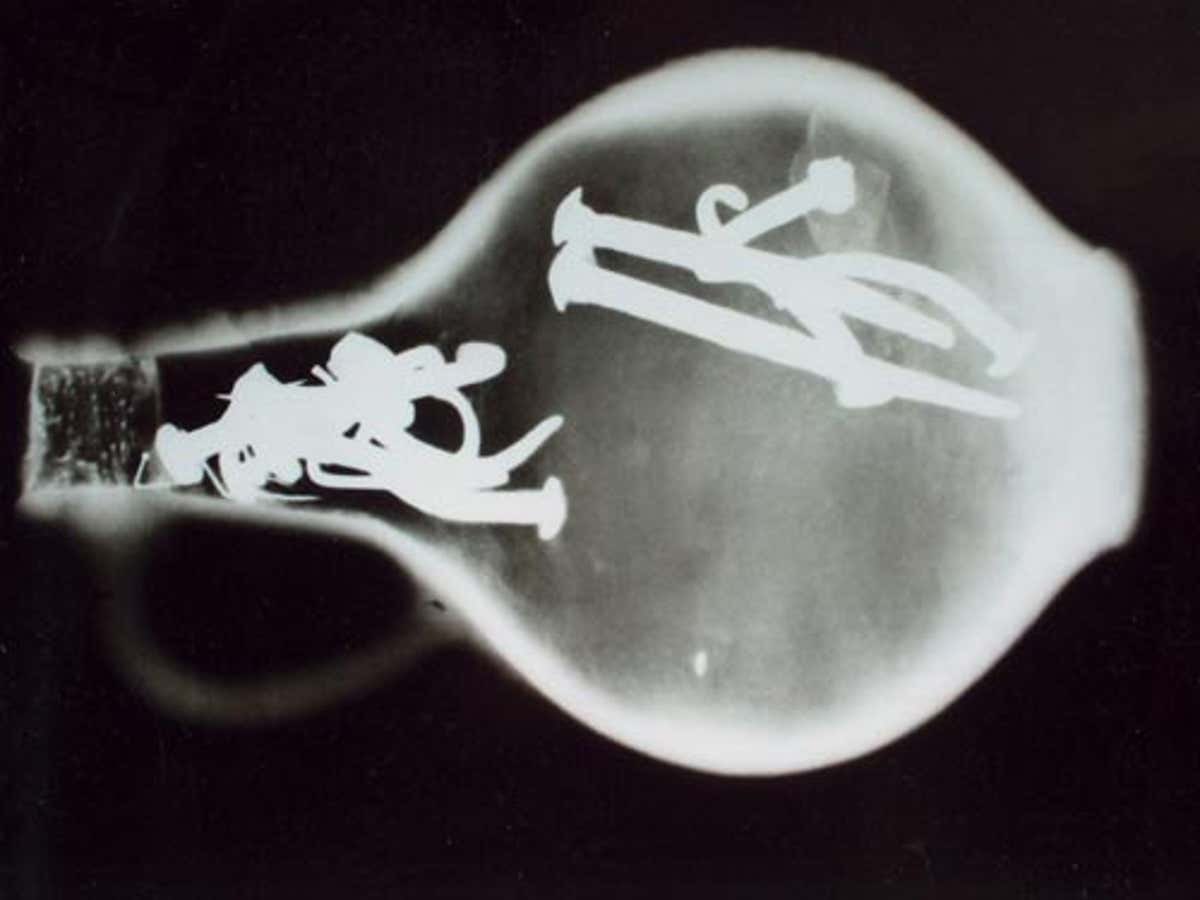“Evidence concerning Witches and Apparitions” (1681) tells of a bewitched woman who was cured when she put her urine in a bottle “together with Pins & Needles & Nails”, corked it & “set the Bottle to the Fire”
This is one of the earliest references to a “witch bottle”
Thread
This is one of the earliest references to a “witch bottle”
Thread

Witch Bottles were spells / talismans to protect against witchcraft & cure those who had fallen to it. So far, over 100 of been found in Britain and less than a dozen have been found in America. This one was found buried in a civil war fort in Virginia. 

They are usually found buried in the wall or the fireplace when an old house is being renovated or demolished. This one dates to the 17th century & was found near the Civil War Centre in Nottinghamshire. 

It was believed the evil spirits would be trapped in the bottle and would drown in the urine and be stabbed with the pins. This one was found Greenwich, London, in 2004 & was x-rayed before being opened 

It was found to contain urine, bent nails and pins, a nail-pierced leather “heart”, fingernail clippings, bellybutton fluff, brimstone, & human hair. newscientist.com/article/dn1724… 

Many of the bottles used are salt glazed stoneware jugs known as Bartmann or Bellarmine jugs. Bellarmines were named after a notoriously fearsome Catholic Inquisitor, Robert Bellarmine. This is a 17th century Bellarmine jug used as a witch bottle (photo: Alex Wright) 

But not all witch bottles are in jugs. This glass bottle was donated to the Pitt Rivers Museum in 1926 by an old lady who said “There’s a witch in it and never open it or there’ll be a peck of trouble.” The bottle has never been opened to this day. 

This one is made of glass and dates to the 19th century. It was found by a metal detectorist Chris Langston (pictured) in woodland near Oswestry, Shropshire. It contains urine and a human tooth. 

Witch Bottles date to at least the 17th century but they continued to be used to ward off evil for hundreds of years. This 19th century one was found in Northamptonshire & contains fish hooks, human teeth, glass and a liquid. 

And it seems the practice hadn’t entirely died out. This very modern witch bottle was found in the Thames & was put on display at the Museum of London’s Spellbound exhibition, which you can read about here museumoflondon.org.uk/discover/sorce… 

New, cutting edge Research into Witch Bottles is emerging all the time. I’m 2019, researchers at the Museum of London Archaeology and the University of Hertfordshire launched their “Bottles concealed and revealed” project, a three-year investigation into witch bottles 

In 2020, the team worked with the Arts and the Arts and Humanities Research Council & the BBC to produce a new animated film, based on their research which you can watch here.
bbc.co.uk/iplayer/episod…
bbc.co.uk/iplayer/episod…
• • •
Missing some Tweet in this thread? You can try to
force a refresh











